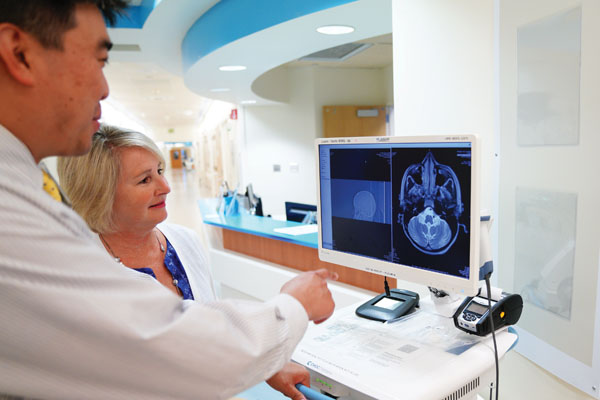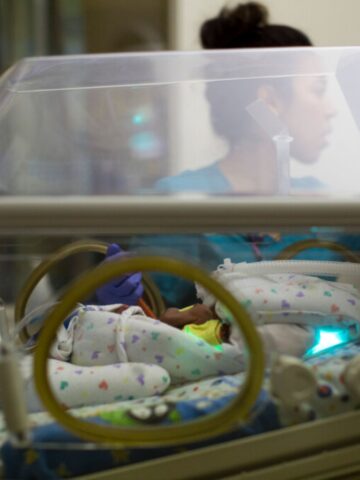When the neuroscience unit nurses at CHOC Hospital discovered that teen patient Maya loved to crack people up, they knew a joke book would be the perfect gift.
Compared to the life-changing treatment Maya is receiving at CHOC Hospital, a book is a very small token. But as partners in this journey, CHOC nurses say it’s the very least they can do.
Maya is among nine patients receiving a novel treatment for CLN2 disease, or late infantile Batten disease at CHOC. The group comes every two weeks for an infusion of Brineura, a drug that replaces a deficient enzyme.
The CHOC team has just celebrated the second anniversary of the first infusion, having clocked more than 300 procedures in the last 24 months. Since CHOC began offering the treatment in spring 2017, the number of patients has more than doubled, says Dr. Raymond Wang, a pediatric metabolic specialist and the program’s medical director.

Among the handful of institutions nationwide offering the treatment, CHOC’s program is the largest.
Despite the juggling act of placing patients, made especially tough during high wintertime patient census, CHOC nursing leadership has helped ensure these patients have never missed a procedure.
Nurses play an integral role in the procedure, assisting pediatric neurosurgeon Dr. Joffre Olaya in inserting a needle through the skin of the patient’s skull and into an Ommaya reservoir implanted beneath the flesh to reach the fluid surrounding the brain.
The procedure is conducted inside the patient’s room on CHOC’s neuroscience floor. During the procedure and afterward as they monitor the patients, the nursing team is in frequent, close contact with the children – and their parents.
“Because of this, we know how some parents take their coffee, which brand of diapers they prefer, and how the families gather to talk after treatments,” says Alison Cubacub, a clinical nurse II in CHOC’s neuroscience unit.
They also know how life-changing the treatment is for families.
Before Brineura clinical trials and its ultimate approval by the U.S. Food and Drug Administration, this small group of patients and their families endured a long odyssey of poring over Internet pages, making endless phone calls, and traveling the country in hopes of finding treatment for the devastating diagnosis that is Batten disease.
The rare and fatal neurologic condition typically begins with language delays and seizures before age 3, and rapidly progresses to dementia, blindness, loss of the ability to walk and talk, and death in childhood.
But Brineura has shown to slow the disease’s progression. Over a three-year period, patients treated during clinical trials showed no advancement of the disease, which was radically different from the disorder’s natural course. The medication improves quality of life and buys patients critical time as researchers continue to search for a cure.
Before, Southern California patients traveled every 10 days from their homes to Columbus, Ohio, to receive treatment as part of a clinical trial. Aside from the inconvenience, the process split apart families. But now, they need only drive a few miles to CHOC for a few hours of treatment.
And while it can’t compare to the relief felt by patients and families, CHOC’s neuroscience nursing team is invigorated by the professional growth that’s been afforded to them as a result of CHOC offering the treatment.
“The science and research that went into developing this treatment is fascinating,” says Melissa Rodriguez, RN, BSN, CPN, a clinical nurse III in CHOC’s neuroscience unit. “To assist in its administration, we participated in an in-depth study that included literature about the procedure and the condition, as well as extensive training in the sterile procedure required to infuse the medication.”




